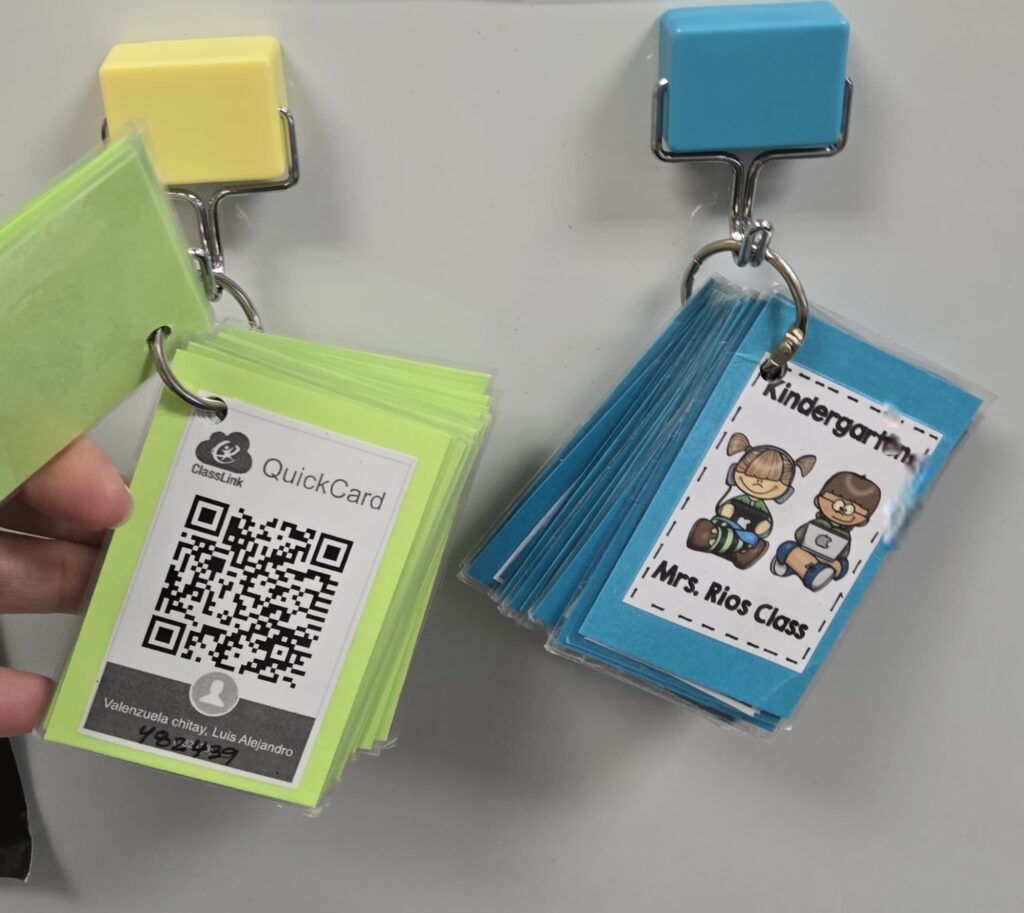
I clearly remember a moment in my kindergarten classroom when one of my students, with sparkling eyes, said: “Look, Miss, I found my name with the code!” He was referring to the QR code cards I had set up to help them access i-Ready independently. It was a small moment, but incredibly powerful: a five-year-old child felt empowered, independent, and excited about learning. That experience captured what classroom transformation means to me it’s not just about adding technology; it’s about opening doors to new ways of learning that respect each child’s pace and style.
As a kindergarten teacher, I’ve seen firsthand how rethinking the classroom goes beyond moving desks or adding screens. It means creating spaces where learning is dynamic, interactive, and deeply connected to students’ lives. In many schools today, traditional layouts with rows of desks are being replaced by flexible seating, cozy reading corners, tech centers, and collaborative tables. These physical changes reflect a broader shift in how we teach and how students learn. Technology like interactive whiteboards, tablets, and platforms such as Google Classroom have made it possible for students to not only consume information, but to explore it, create with it, and share their learning in meaningful ways.
One of the most exciting changes I’ve witnessed is the shift from a teacher-centered model to one that truly places the student at the center of the learning experience. In this approach, students are not passive listeners; they are active participants, problem-solvers, and decision-makers. Strategies like project-based learning and learning stations give young learners opportunities to investigate, collaborate, and lead. As teachers, we become facilitators guiding discovery rather than delivering one-size-fits-all content. This transition not only supports stronger academic outcomes, but also cultivates essential 21st-century skills such as communication, independence, creativity, and critical thinking (Robinson, 2010).
Still, many educators especially in early childhood worry about striking a balance between digital tools and hands-on experiences. The concern is valid: young children need sensory, real-world learning. But technology doesn’t have to replace that. When thoughtfully integrated, it can enhance what students are doing with their hands, minds, and hearts. In my own classroom, digital games from platforms like Toy Theater are used alongside physical manipulatives during math centers. A science experiment might be paired with a digital simulation that helps us visualize microscopic changes. It’s not a matter of choosing one or the other it’s about blending both in ways that enrich learning.
Another powerful benefit of technology is the ability to support a wide range of learning styles and abilities. Some students are visual learners, others auditory or kinesthetic. Some are English language learners or have specific learning needs. With the right tools, we can reach all of them. Apps like ClassDojo encourage self-regulation and positive reinforcement, while tools like Edupal and Notion help us organize materials in a more flexible, accessible way. Built-in features on digital devices like text-to-speech, captioning, or adjustable font sizes support inclusion and equity. Universal Design for Learning (CAST, 2018) reminds us that accessibility is not a feature it’s a foundation for effective teaching.
Of course, this transformation is not without its challenges. Many schools face issues like lack of training, limited funding, digital access gaps, or resistance to change. I’ve seen teachers overwhelmed by too many platforms or unclear expectations. But there are also inspiring solutions. Ongoing professional development, collaborative pilot projects, and a focus on simple, high-impact tools can make a big difference. In my case, the use of weekly QR codes simple, low-tech, and easy to manage motivated students to work independently during tech centers and gave them a sense of ownership over their learning.
Reflecting on these changes, I realize that the future of education is already here it’s just not evenly implemented. To truly prepare our students for the digital age, we must embrace a mindset of growth, experimentation, and empathy. We must be willing to reimagine what the classroom can be not just as a space, but as a culture of curiosity, collaboration, and possibility. Technology is not a magic wand, but it is a powerful tool when guided by vision and purpose. And in classrooms where students feel seen, heard, and capable, magic does happen one QR code, one joyful discovery at a time.
📚 References (APA 7 Style):
- CAST. (2018). Universal Design for Learning Guidelines version 2.2. Retrieved from https://udlguidelines.cast.org/
- Robinson, K. (2010). Bring on the learning revolution! [Video]. TED. https://www.ted.com/talks/sir_ken_robinson_bring_on_the_learning_revolution
- U.S. Department of Education. (n.d.). Use of Technology in Teaching and Learning.
- https://tech.ed.gov/teaching